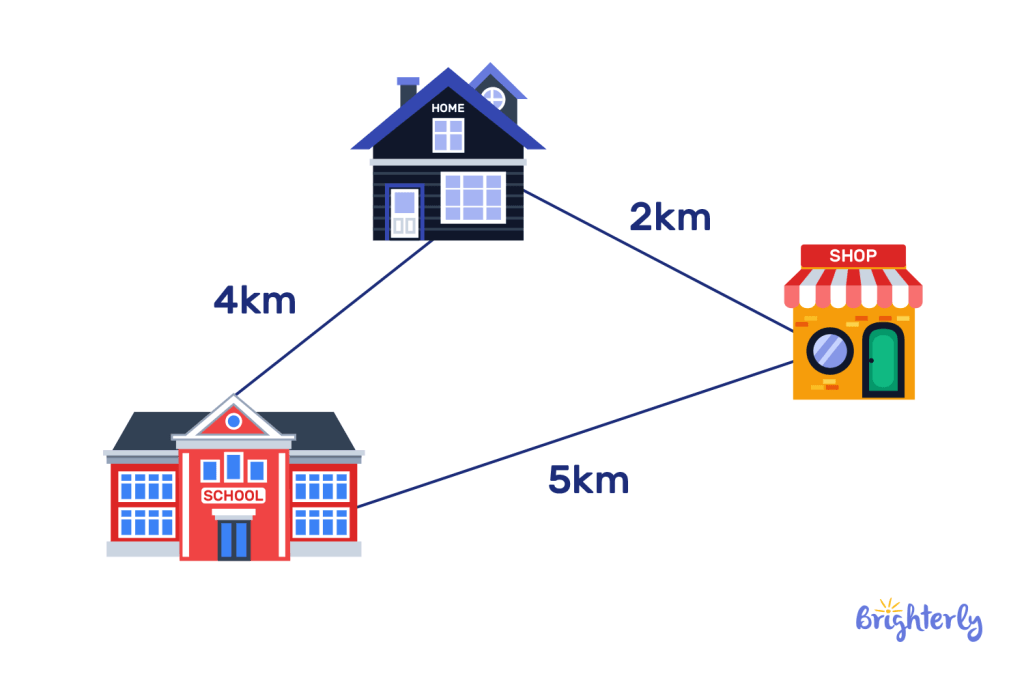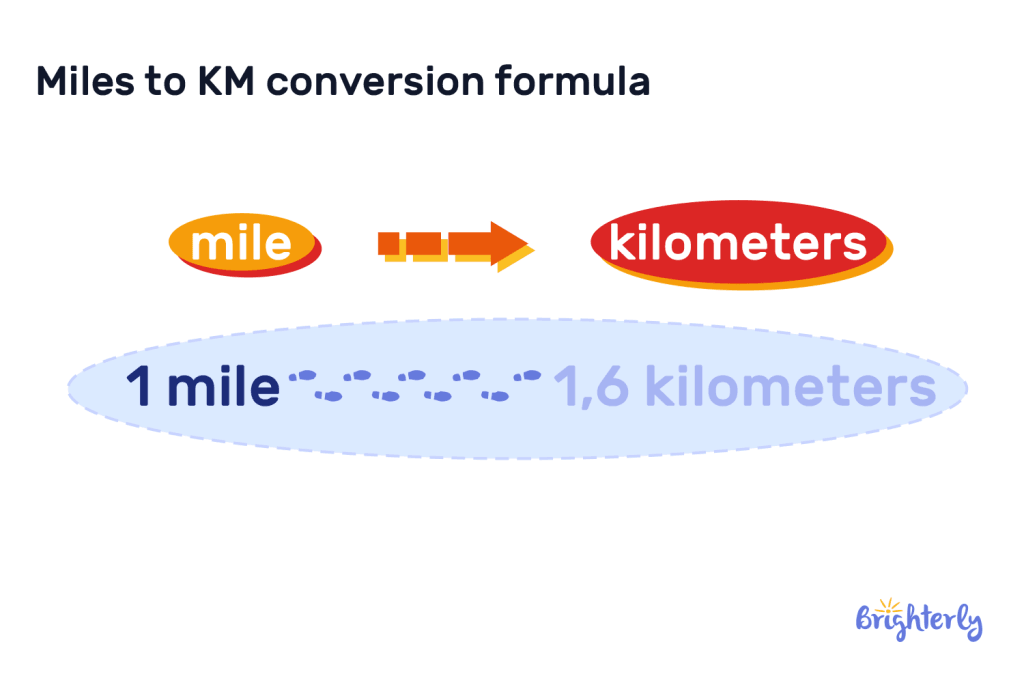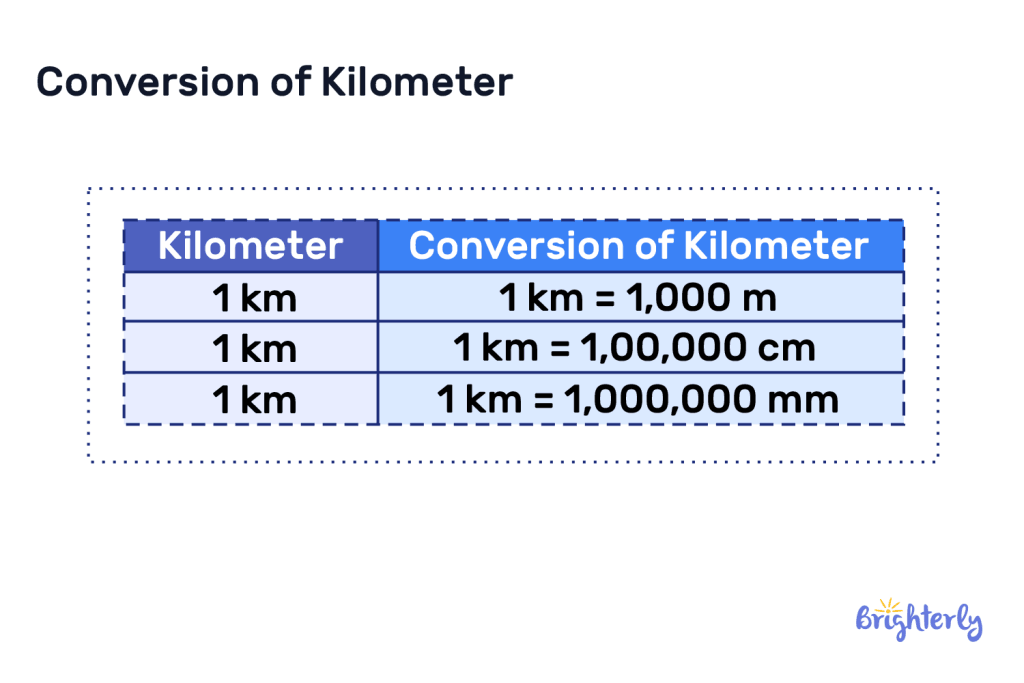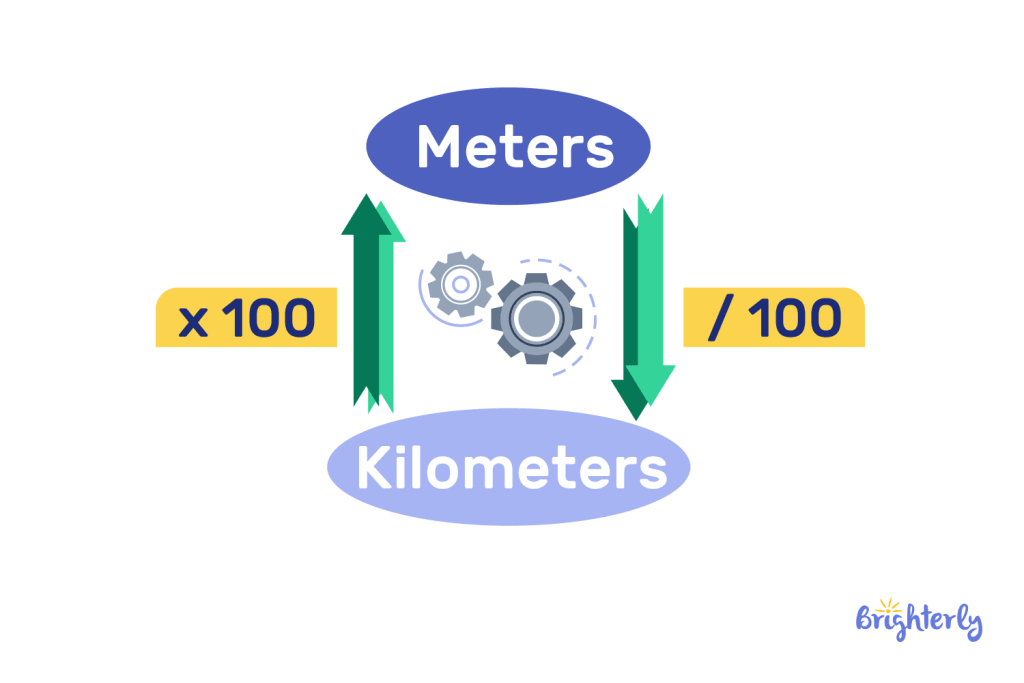Kilometer in Math – Definition, Example, Unit, Facts
reviewed by Jo-ann Caballes
Updated on October 3, 2024
At Brighterly, it’s our mission to make math fun, engaging and accessible for all kids.
As part of our series on measurements, we’re looking at the kilometer. This essential measurement is a must-know for everyday life.
Here, we’ll cover the kilometer meaning, provide examples of kilometers, share practice questions and show you how to convert kilometers!
What is a kilometer in math?
A kilometer in math is a metric unit of length equivalent to 1,000 meters. Rather than working with ever-increasing measurements in meters, the units of km help us measure long distances in a straightforward way. This can include the distance across countries or between cities.
You may have heard of 5K races (or even run one!) – that “K” stands for the kilometer measurement!
How long is a kilometer?
1 kilometer is 1,000 meters long, 100,000 centimeters long and 1,000,000 millimeters long!
By rounding smaller measurements into units of km, we can measure larger distances without working with large and complex numbers.

5 things measured in kilometers
There are lots of things that are commonly measured in kilometers, including these kilometer examples in real life:
- The kilometer length of a run, like a marathon
- The distance between two cities or towns
- The kilometer length of an area, like a public park
- The distance between two locations, like school to home
- The height of very tall buildings like towers

Definition of a kilometer
The definition of a kilometer is a metric unit of length equivalent to 1,000 meters. It’s based on one of the seven basic metric units – the meter. The kilometer definition is consistent worldwide because it represents a fixed, unchanging length.
The kilometer measurement also utilizes the base-10 rule, where each larger or smaller measurement represents a ten-fold increase or decrease.

Kilometers and miles: difference
Kilometers and miles are different because they represent different lengths and are part of different measurement systems. The kilometer is part of the metric system and represents 1,000 meters, or 0.62 of a mile.
A mile is part of the imperial measurement system. It’s equivalent to 3280.84 feet, 1,760 yards or 1.61 kilometers.

Converting kilometers
You can convert kilometers into any other measurement, as long as you know the formula.
Here, we cover some common conversions from 1 km to other measurements and conversion rate
| Measurement | Conversion formula to 1 length kilometer |
| Millimeter | 1 kilometer equals to = 1,000,000 mm |
| Centimeter | 1 kilometer equals to = 100,000 cm |
| Meter | 1 kilometer equals to = 1,000 m |
| Mile | 1 kilometer equals to = 0.62 m |
| Feet | 1 kilometer equals to = 3280.84 ft |
| Yards | 1 kilometer equals to = 1,760 yd |
For example, to work out how many millimeters are in your kilometer, you multiply the number of kilometers by 1,000,000. Similarly, if you want to convert to miles, just multiply your number of kilometers by 0.62.
It’s important to know and understand these conversions so you can easily translate measurements between different systems.

How many meters are in kilometers?
There are 1,000 meters in 1 kilometer. The kilometer measurement is part of the metric system, which is based on the power of 10. This means each unit is 10 times the previous smaller unit, or a tenth of the next unit up.
The basic metric units go:
- Millimeter
- Centimeter
- Decimeter
- Meter
- Dekameter
- Hectometer
- Kilometer
The most common metric units we use are millimeters, centimeters, meters and kilometers.

What is bigger, kilometers or meters?
The kilometer is bigger than the meter. That’s because there are 1,000 meters needed to make up 1 km.
How many centimeters are in a kilometer?
There are 100,000 centimeters in a kilometer.
Kilometers to millimeters
To work out kilometers to meters, you need to multiple your kilometer length by 1,000,000.
Are kilometers bigger than millimeters?
Yes, kilometers are bigger than millimeters, because it takes 1,000,000 millimeters to make up a kilometer.
Kilometers to miles
Converting from kilometers to miles is a skill all kids should have, and it’s easy to do once you know the formula:
X = N x 0.621371
Let’s use a 1 kilometer example. To convert 1 km to miles, perform this sum:
1 x 0.621371 = 0.621371
Therefore, 1 km is 0.621371 miles.
Let’s use a slightly larger 5 kilometers example. To convert 5 kilometers to miles, we perform the below operation:
5 x 0.621371 = 3.106855
Therefore, 5 kilometers is 3.106855 miles.
You can also use the miles to kilometers conversion scale:

Is kilometers bigger than miles?
No, kilometers aren’t bigger than miles. There are 1.61 kilometers to every mile, making the mile a longer unit of distance than units of km.
How many feet are in a kilometer?
There are 3280.84 feet in a kilometer.

Solved math tasks: examples
Here are some solved kilometer math tasks to practice your knowledge on!
Solved math task 1
2,500 m is equal to how many kilometers?
Answer:
| 2.5 kilometers. |
There are 1,000 meters in a kilometer, so you divide your meters figure by 1,000.
Solved math task 2
Solve this sum: 4 km – 280 m.
Answer:
| 3,720 m or 3.72 km. |
To work out this sum, first multiply 4 km by 1,000 to get your meters figure, then subtract 280 from it.
Kilometer: practice math problems
Kilometer worksheets
Now that you know the kilometer definition in math and can convert it to various measurements, why not put your knowledge to the test with our engaging kilometer math worksheets?







